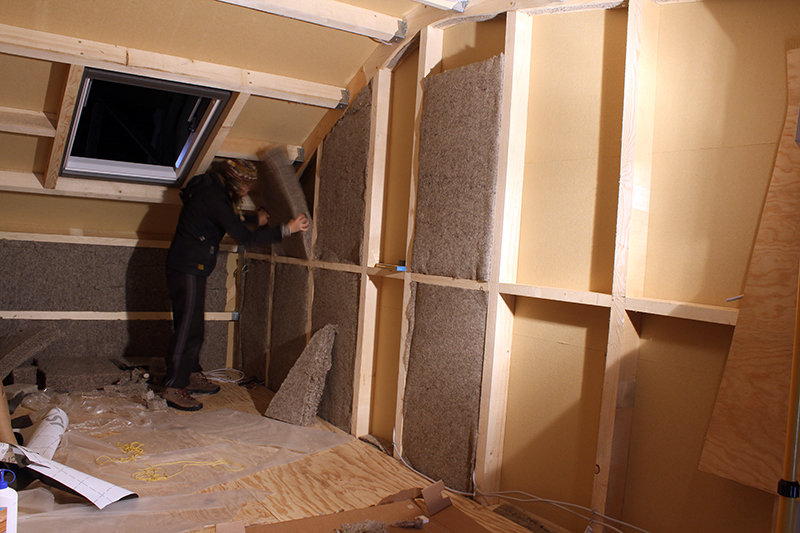 |
| Wool carding machine |
If you haven't already noticed, I am fascinated with the transformations that turn raw materials into architecture. I like to go back to the source of things- whether it's brick, plywood, or concrete. So I said yes straight away when the sales agent of Fiwo suggested I visit the factory to see how wool is turned into insulation batts.
Fiwo is a Swiss not-for-profit company that was originally founded to re-insert people in social difficulty into the workforce. It also developed out of the realisation that wool is a waste product in Switzerland, and two-thirds of the wool production was being burned. The founder saw the opportunity to recover a valuable material that has many useful properties, as well as help out the sheep farmers by paying for a substance they would have had to pay to dispose of.
The wool is first sorted by hand, to remove impurities and to sort by colour. Apparently, black wool fibres are coarser than white ones, which can be problematic during the felting process.
The wool that is too dirty is turned into fertilizer. It is chopped up and made into pellets. It releases minerals slowly, over many months, and helps to retain moisture in the soil.
The wool then gets re-baled and sent to a cleaning factory in Belgium. That was the only part I found a bit absurd, because everything else is done locally. But the cleaning needs to be very precise: the lanolin content of the clean wool has to be between 0.5 and 0.8%. A higher lanolin content increases risks of fire and other machine malfunctions. The factory in Belgium is the only one in Europe.
The clean wool then comes to the main production room. This hall is criss-crossed with ducts that blow the bits of wool from one machine to the next.
The Swiss have very colourful sheep! Just kidding- this wool is mixed with recycled textiles.
About 10-15% of plastic fibre is added to the wool to bind the batts together. They are looking to use a natural material- corn, for example- but for now the price is too high. Already they struggle to gain any market share, because clients like to pay extra for visible elements like kitchens and tiling and they don't really care what goes inside the walls. For a normal-sized house, apparently the additional cost of using sheep's wool as insulation would be between 5000 and 10 000 francs compared to rockwool or cellulose. This cost could be justified by the higher air quality and moisture control, but often the budget is the deciding factor.
The wool is then sent into the carding machine, which produces a very thin sheet of fleece. Another machine lays this fleece in layers, according to how thick the finished batt should be.
It then gets sent either into the oven and baked at 180°c to produce batts, or to a needling machine that turns it into felt.
The batts come out of the oven in large sheets which are cut to size and packaged. And delivered all over Switzerland.
A big part of the explanations of the tour were about the social side of the enterprise. Everything in the production room has to be clearly labelled because the workers are temporary- some might only come for a couple of days or weeks. The focus is getting the employees prepared for re-insertion into the workforce- which also involves counselling, and sometimes disciplinary measures. Fiwo offers a hot lunch, and also gets an association to bring in groceries that would otherwise get thrown out.
I was impressed by the holistic vision of the company. They seem to address equally the personal and material logistics, and are constantly looking to improve the product. I told my tour guide that I would be happy to recommend their wool insulation to any clients I might have!
For now, I'm working on putting my own shipment of Fiwo batts into the walls of the Carabane.












Comments
Post a Comment